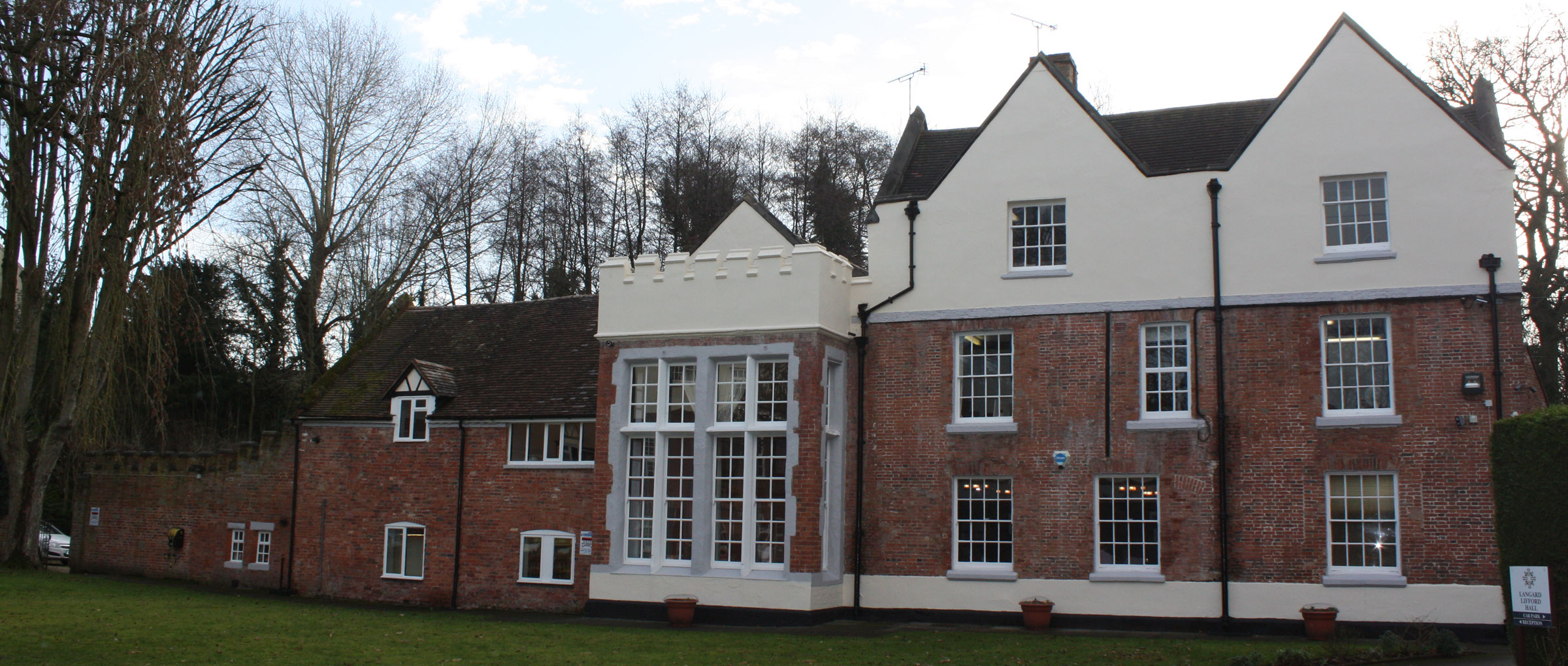About Lifford Hall
It is generally believed that on the site of Lifford Hall was an ecclesiastical building possibly dating from Saxon times and perhaps connected with religious orders which later became established in the area notably at Bordesley Abbey near Redditch.
The remains of old sandstone foundations and the presence of two underground tunnels beneath the front lawns give evidence of the existence of an earlier building. Lifford Hall was built in 1604 with the main dining room extension added in early Victorian times, and the recreation room and the connecting corridor built in 1951. The Hall is scheduled as a building of historical interest and for this reason the very extensive renovation and internal re-equipment which was undertaken in 1950 was not allowed to affect the appearance which remains much as it originally was.
Two early 17th century stone mullion windows are still visible, but the ancient looking wall and imitation castle tower built to divide off the rear garden are only evidence of the fashion in Victorian times for the building of “follies” of the type.
It is not certain by whom the Hall was built but in 1781 it became the residence of the first Viscount Lifford. This man, born James Hewitt, originated from Coventry and became the Lord Chancellor of Ireland in 1768. His title was associated with Lifford near Londonderry, in North Ireland, and it is generally believed that he consequently bought the name to the area.
After the death of the first Viscount Lifford, the house was bought by Thomas Dobbs. This gentleman was the engineer who constructed both the Birmingham to Worcester and the Birmingham to Stratford-upon-Avon canals, which join a few hundred yards from the works.
But, the local history is more interesting than that. Mr Arthur Capon, (who married the daughter of Mr Oford who bought the Hall from Mr Dobbs in the early 1800’s), built the first rubber mill in England in the grounds of Lifford Hall. This old building will be remembered as a ruin by many still at Lifford. This building and the water wheel was removed in 1954 although an old brick structure which was presumably the mill office and warehouse was taken down in 1965 in order to improve the visibility in Tunnel Lane.
One of the men of the Capon family is reported to have hanged himself on a tree in Lifford Hall grounds and this has given rise to the ghost story connected with Lifford Hall, which has from time to time received a little publicity from the press.
After the Capon family left the area, the Hall was owned by the Griffin-Harris family, who handled fishing and boating on the reservoir.

